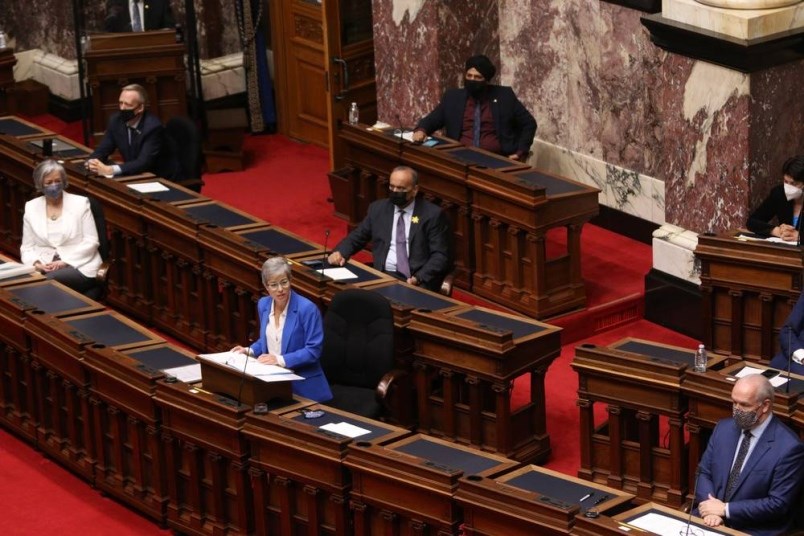The doomsday deficit disappeared Tuesday as the B.C. budget rolled out with less red ink than expected.
Just four months ago the NDP government confirmed for the second time that the shortfall for the fiscal year that ended three weeks ago would be $13.6 billion. On Tuesday, the final number was released and it is $8.1 billion.
It’s the simplest, most direct measure of how badly the pandemic is hitting the economy. In contrast to the human toll, the news is much better than expected. To the point where the validity of the earlier estimate looks suspect.
The deficit is projected to rise in the fiscal year that just started to $9.7 billion. But if the winter projection was that far off-base, the new estimate could shrink as well.
As it stands, B.C. is expected to go deeper in the red in the year after the worst of COVID-19 than it did in the year that was consumed by it.
Finance Minister Selina Robinson, who delivered her first budget two months late, said it had to do with bulking up contingency funds and a forecast allowance.
Whatever the rationale, even a $9.7 billion deficit looks relatively manageable. It’s shocking in relation to the fact that B.C. had a balanced budget just 14 months ago. But the new target date for a return to balanced budgets is seven to nine years away. If the first estimate had borne out, it would have been closer to two decades.
The official breakdown of how $5.5 billion worth of deficit disappeared in just four months breaks it down to unexpected revenue and less spending than anticipated.
The budget documents say it’s consistent with the past practice of government to try to meet or beat the expectations. The quickest way to do that is to set the bar low. So the winter estimate of the operating shortfall was the bleakest possible outlook. It creates optimism when reality is much better than expected. But it also creates doubt about how the expectations are set.
Bracing for the worst and hoping for the best is standard practice. But a 40 per cent difference in four months amounts to overkill.
The government booked $2.3 billion more revenue from various taxes than originally expected, used up another billion in a forecast allowance and enjoyed a $680 million unexpected boost in federal transfer payments.
Underspending in some programs and contingency juggling made up the rest of the difference.
For some reason, Robinson didn’t include even a brief mention of the actual balance sheet in her formal budget speech, even though it amounted to comparatively good news.
Some of that good news comes from an embarrassing source. The NDP government is relying just as much as the B.C. Liberals did on the take from a real estate market that soared through the pandemic, against all expectations. Overestimating deficits to make the year-end numbers look good was also a Liberal characteristic.
There was a sharp contraction initially, but the real estate market roared back and sales reached record levels. Â鶹´«Ã½Ó³»Island had a 99 per cent increase in sales, according to the budget documents.
“Meanwhile the average home sale price in B.C. increased by 11.6 per cent in 2020 compared to 2019.”
The 2021 numbers to date are up 16.5 per cent.
That contributed to the revenue boost. But it is the exact opposite of what the NDP purportedly stood for in terms of making housing more affordable. The government emphasizes its measures to increase supply at every turn, but goes mute when it comes to discussing why the attempts to curb demand aren’t working and why affordability is getting worse, not better.
After years spent accusing the Liberals of living off the avails of a real estate boom, the NDP is finding out it has its advantages.
Robinson insisted to reporters that they are delivering on affordable housing.
“I’m not disputing the fact that we are seeing incredible activity in the marketplace. No one expected that … we are seeing increased demand.”
Stricter stress tests on mortgages are expected to have an impact on demand, she said.
That skimpy explanation will have to suffice while people wait for tens of thousands of new housing units to be finished and have an impact on prices. In the meantime, the taxes on all those deals will come in handy.



